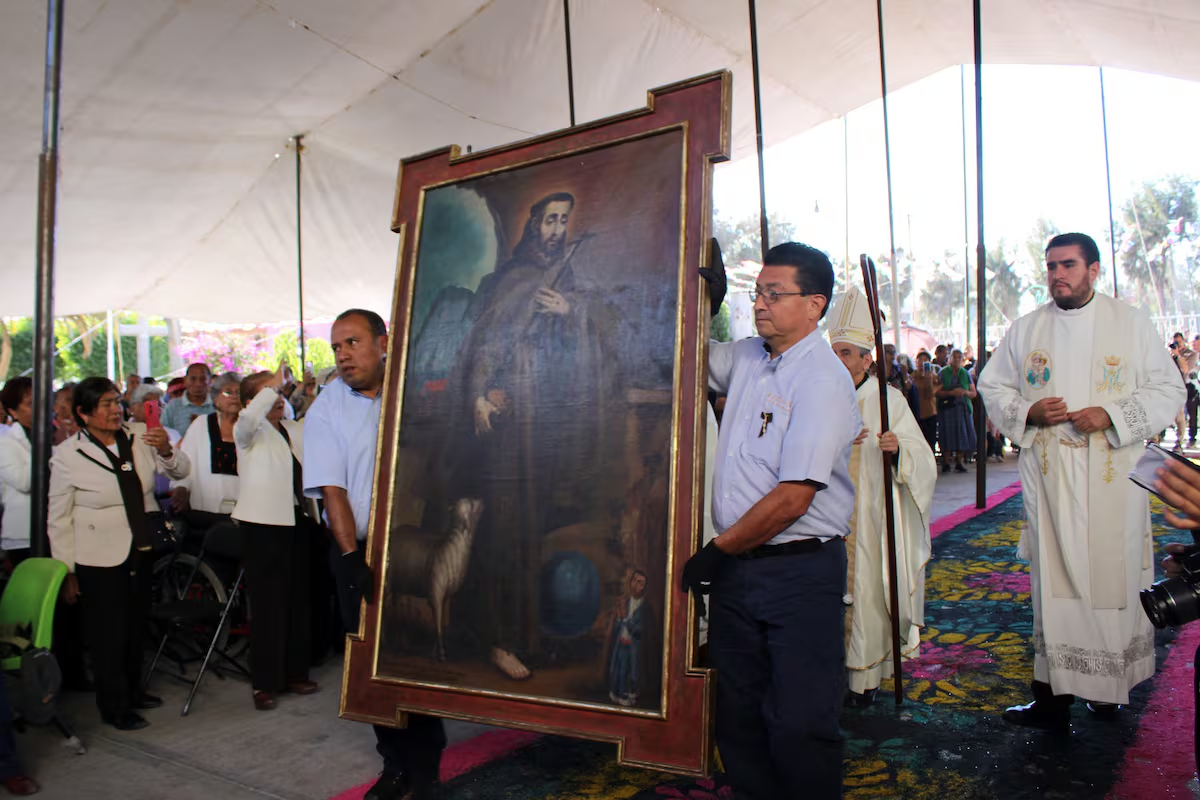
St. Francis of Assisi returns to his home in Teotihuacan. The Parish of Masapa San Francisco, located in the town of the same name behind the Pyramid of the Sun in Mexico state, has successfully recovered an 18th-century oil painting of the saint that was stolen 24 years ago. The painting arrived at the Mexican auction house Morton in 2017, and after undergoing registration procedures, including a contract and catalog photos, the painting was uploaded to the Art Loss Register, a global database that keeps records of stolen and lost works. “They blew the whistle on us,” David Collepardo, manager of Morton’s antiques and books department, said by phone. “We have stopped the auction process. Art Loss Register has filed a corresponding complaint with the public prosecutor’s office and tried to contact the owner who offered the work, but we did not receive a response,” he says.
Collepardo explains that it took him eight years to return the work because the process took so long. “We don’t really know what[the legal process]was like. Fortunately, something like this doesn’t happen to us often,” he added. He says he was notified last year that the investigation was complete and that the logistics of sending the work to the San Francisco-Mazapa Diocese could begin.
Bishop Guillermo Francisco Escobar Galicia of the Diocese of Teotihuacan held a ceremony this weekend to welcome the painting, attended by representatives of the auction house and 1,000 local residents. “This is more than just a work of art, it is a religious symbol that strengthens the faith of the community,” the bishop said during the event. On Morton’s Instagram account, they published several photos and said the move was a reminder that stolen cultural heritage, often thought to be lost forever, can be returned to its rightful owners.
The size of the work is 180 cm in height and 146 cm in width. The painting was created in 1728 by Mexican Antonio de Torres, according to the website of 3Museos, a cultural institution in Monterrey, Nuevo Leon that includes the Mexican History Museum, Palace, and Museum of the Northwest. He produced a large number of statues of the Virgin of Guadalupe and is considered one of the most prolific and popular painters of his time.
The saint is standing and wearing sackcloth (a type of tunic made of wool), holding a skull in his right hand and a small cross of Jesus in his left. Stigmata appear on the palms and upper parts of the feet. At the bottom left is a dedication: “For three days in December 1747, to the dedication of Don Gregorio Juan, the present mayor.” According to the Facebook page Cosmobición Indígena Masapa, Gregorio Juan was the mayor of an indigenous community.



